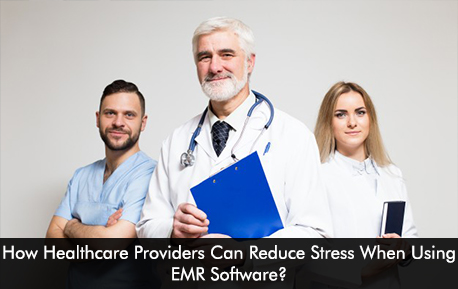In a recent JAMIA study 70% of physicians who use EHR software systems in the patient care delivery process experience stress due to increased demands of health IT use. This negative stress may result in physician burnout which can impact productivity and care levels. It’s first important to identify the signs of physician burnout which includes emotional tension and dissatisfaction related to work.
With thoughtful planning and implementation of the right software system a stress-free and efficient work environment can be maintained when using health IT software. Physician burnout can be easily prevented and with robust solutions to reduce tiresome data input to facilitate better communication and patient care.
Identify the trigger points of stress
It is wise to not the reasons that trigger stress and anxiety in physicians when using healthcare software systems so that quick solutions can be offered to avoid negative impacts resulting from burnout. Healthcare providers have noted that while examining their patients they spent more time with the software system, meaning clicking through screens. As a result, patients can also feel dissatisfied with the lack of undivided attention.
An interface that is unintuitive and complicated can take a lot of time for clinicians, which can add up to stress levels. Technology can either help your practice or go wrong if the right software solution is not selected.
Finding a way out
It is advised that healthcare organizations and clinics use the best software system with the tools and features that help meet their needs making them satisfied users. Sometimes a general EHR software may not be a perfect fit for your cardiology practice as you may waste time using features you don’t require. In this case, you might want to go for a specialty-specific EMR software system that will be designed exactly to meet the unique needs of your cardiology practice. A cardiology EMR software solution will customize your workflows to meet your and your patient’s requirements. The custom features, reports, and template will match the cardiologist’s exact needs providing seamless access to patient history and treatment.
If your existing EMR software system is clunky and inefficient then you need to make a shift to a software system that doesn’t add to your daily stress but reduces it. Many software vendors offer ease of use and an intuitive interface that is easy to be used by staff members and physicians. A user-friendly Electronic Medical Records (EMR) software can help users to improve productivity levels.
Furthermore, your practice should also ensure that the EHR software system integrates seamlessly with other software systems such as the billing software and the Practice Management (PM) software. This integration will make it simple for providers to get the information they need promptly and reduce any frustrations that can be caused by healthcare technology.
Conclusion
The right technology and software solution can turnaround physician stress and help streamline daily workflows to enhance productivity levels. Good EMR software solutions can help clinicians to simplify processes by reducing the amount of paperwork and making the documentation process simple with features of voice recognition. Technology can be utilized to revolutionize the care process and help tackle the issue of physician burnout.







